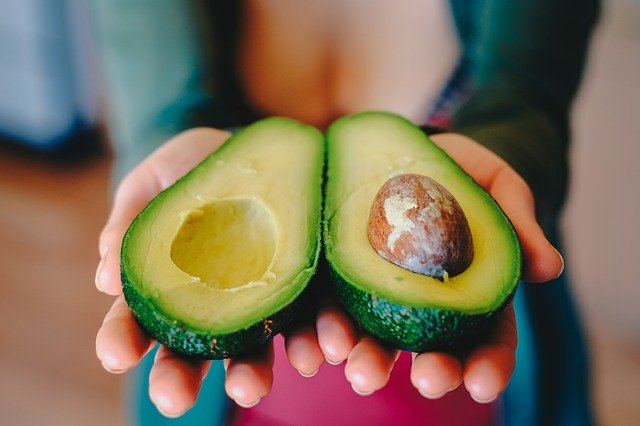The Health Benefits of High Fiber Foods with Travis Zipper
A growing body of evidence now demonstrates that adequate fiber intake may benefit your digestion and reduce your risk of chronic disease. Additionally, a high fiber diet can aid in weight management, increase healthy gut bacteria, and significantly lower your odds of being diagnosed with heart disease.
Since it is beneficial to receive a majority of your fiber from food (as supplements don’t provide the vitamins, nutrients, and minerals that fiber-rich foods do), Travis Zipper has compiled a list of high fiber sources. As the Founder of the Wellfitz Mentorship, Travis Zipper works in a functional and conventional medicine setting, helping patients with leaky gut, bacterial infections, low testosterone, and a host of other conditions. With a belief that food can be both fuel and medicine, Travis Zipper has outlined some of the most important facts that you need to know about fiber.
Knowing What Food Sources Contain Fiber
Travis Zipper points out that there are three types of fiber: soluble, insoluble, and resistant starch. Soluble fiber attracts water to form a thick gel that slows digestion and includes whole grains, legumes, psyllium, some fruits, vegetables, and nuts. Insoluble fiber can be thought of as ‘bulking fiber’ and can help to maintain regular bowel movements. Bulking fiber is found in most whole grains, wheat bran, rice, pasta, noodles, couscous, legumes, nuts, the skins of vegetables, and in some fruit. Resistant starch helps the good bacteria in your colon thrive, promoting digestive health, and can be found in legumes, whole grains, rice, potatoes, and firm or green bananas. There are hundreds of fiber-rich foods available, but Travis Zipper has compiled a list of options that provide a wealth of other nutritional benefits in addition to their high fiber content.
Legumes
First on the list: legumes. Legumes include chickpeas, black beans, lentils, lupins, soybeans, peanuts, alfalfa, beans, and others. With over 13,000 varieties, it would be impossible to name them all. Travis Zipper explains that ‘legumes’ is a general term used to describe the seeds of plants from the legume family. In addition to their high fiber content, legumes have several health benefits, including reducing cholesterol, decreasing blood sugar levels, and increasing healthy gut bacteria. As an excellent source of complex carbohydrates, protein, and fiber, legumes are highly satiating food. Many legumes, including both fresh and dried, also contain significant amounts of antioxidant-based compounds.
Chia Seeds
One of the highest sources of fiber you can consume is chia seeds. Chia seeds are the edible seeds of Salvia hispanica, a flowering plant in the mint family that is native to Central America. Chia is the ancient Mayan word for strength. In addition to being the single best source of fiber on the planet, chia seeds contain high amounts of magnesium, phosphorus, calcium, and omega-3 fatty acids. Chia seeds contain more omega-3 fatty acids than salmon, gram by gram. However, for some, it is important to note that a person should really not eat chia seeds dry, as this could be dangerous (primarily because they can absorb water so drastically) so just soak them overnight first, just to be on the safe side. Travis Zipper suggests adding chia seeds to a carrier, like a coconut milk, and adding a sugar substitute like Stevia and that makes a healthy high fiber chia seed pudding.
Artichokes
Despite being categorized as a vegetable, artichokes are a type of thistle and are very high in dietary fiber. Travis Zipper explains that this plant originated in the Mediterranean, and has been used for centuries for its potential medicinal properties—and of course, high fiber content. One medium artichoke contains almost 7 grams of fiber, which is a quarter of an individual’s daily intake. Ranking among the most antioxidant-rich of all vegetables, artichokes are also packed with powerful nutrients, from folate to magnesium and Vitamin C, providing a person with several additional benefits. An easy way to prepare artichokes is to combine artichoke hearts, low fat and organic mayonnaise, and parmesan cheese, mix well, and pop in the oven for a quick and easy and tasty dip.
Avocado
An unlikely candidate for a list of high fiber content foods is the avocado. The avocado has been cultivated throughout Central America for thousands of years, but the combined crops of California and Florida currently represent the world’s largest commercial production of avocadoes. When consumed with an adequate amount of fluid, the insoluble fiber in avocados promotes both digestive health and bowel regularity. As it adheres to water rather than dissolving it, insoluble fiber increases the rate at which material moves through the digestive tract as well.
Raspberries
If you’re looking for a sweet source of fiber, try eating raspberries. All berries are high in fiber, so if raspberries aren’t particularly your thing, try blueberries, strawberries or blackberries. But raspberries are highly nutritious with a very strong flavor, loaded with additional vitamins such as manganese and vitamin C and one cup of raspberries contains a whopping 8 grams of fiber. Of course, Travis Zipper always suggests eating the whole fruit to enjoy the benefits and be recommends avoiding fruit juice, as most of the time is just a sugar concentrate and contains very little juice.
Travis Zipper explains that it is worth mentioning that hitting the adequate intake guideline for fiber, regardless of either age or gender, is about 14 grams of fiber for every 1,000 calories that a person consumes. This would be roughly 25 to 38 grams every day for men and women younger than 50, and 21 to 30 grams for men and women over 50. If you are new to consuming fiber, it is advised to just take it slowly. Travis Zipper explains that it is best to gradually add fiber to your diet while also increasing your water intake. Also remember that soluble fiber absorbs water so the more you add to your diet, the more water that you should drink.

